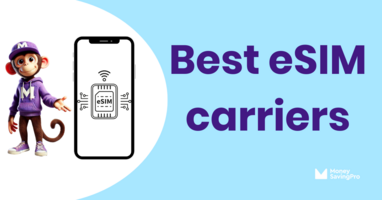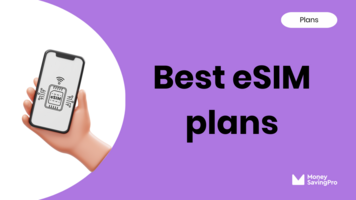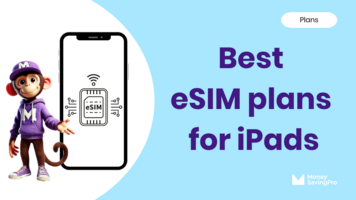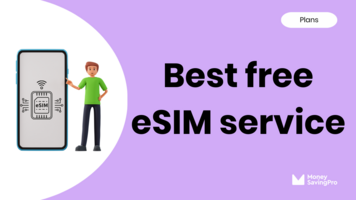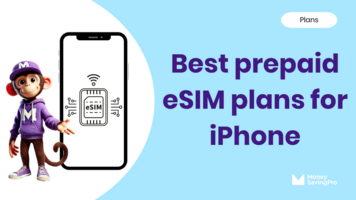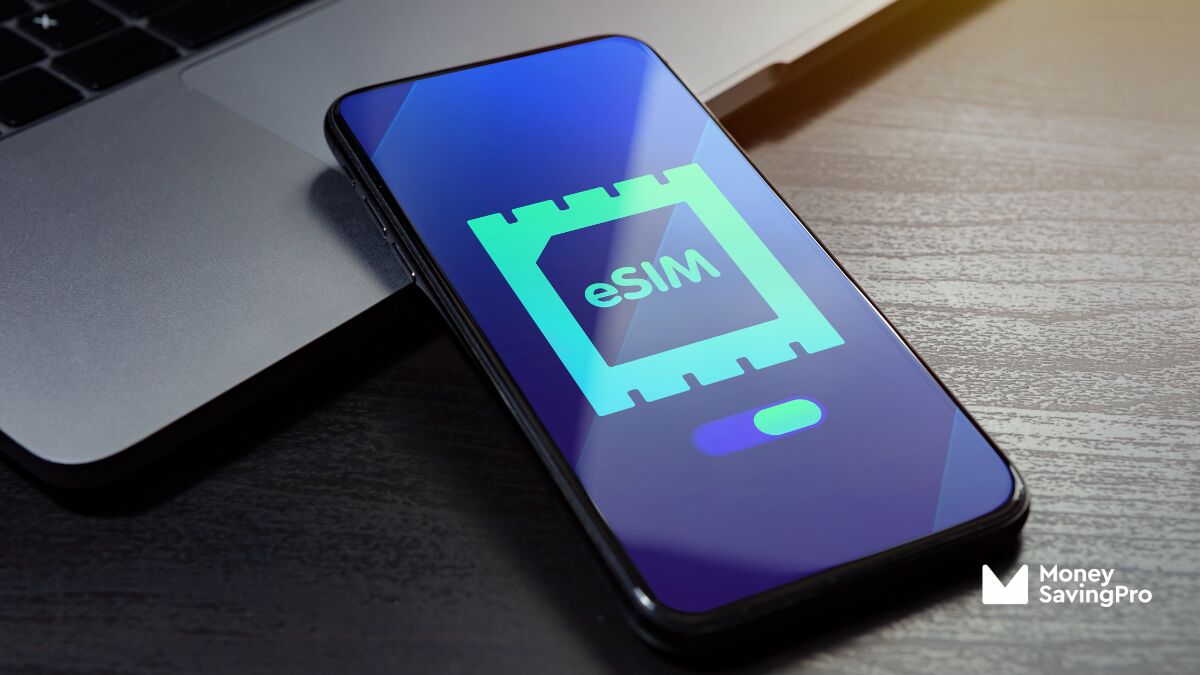
If you have an iPhone 11 and you've heard the buzz around town about eSIMs, you're in luck! The iPhone 11 supports eSIM technology.
An eSIM, also known as an embedded SIM, is a digital SIM card that replaces the need for a traditional SIM card. And the great news is that eSIMs make it quicker and easier to switch, and they could save you a bunch on your cell phone plan.
Find out more about eSIMs, focusing mainly on the iPhone 11. And I'll even show you how a cheap eSIM plan can help you almost halve your cell phone bill.
eSIM on the iPhone 11
The iPhone 11 does support eSIM technology, so you can reap the benefits of virtual SIM cards without needing a physical nano SIM card. eSIM allows you to switch between carriers and cell phone plans more conveniently, potentially saving you significant money in the long run.
Many iPhone devices, including all the iPhone 11 models, support dual SIMs. With Dual SIM card support on the iPhone 11, this includes one physical SIM slot and one eSIM.
So, you can have two phone numbers with different plans on a single device. This is ideal for those who want separate personal and business lines or if you travel internationally on a regular basis. Dual SIMs also allow you to use more than one wireless network on the same device. And, if you enable cellular data switching, your phone will switch to whichever line has the best mobile data service, depending on coverage and availability.
Some newer iPhones have dual eSIM support (eSIM-only), banishing the need for a physical SIM card slot.
How to install eSIM on an iPhone 11
Installing an eSIM on your iPhone 11 is easy-breezy. Here's a step-by-step guide to help you get started:
- Check compatibility: Ensure your carrier supports eSIM data activation and your iPhone is unlocked.
- Contact your carrier: Reach out to your carrier's customer support to request an eSIM activation. They'll provide you with a QR code or activation details.
- Access settings: On your iPhone, navigate to "Settings" > "Cellular" > "Add Cellular Plan."
- Scan the QR code: Use your iPhone's camera and scan the QR code.
- Activate eSIM: Follow the prompts to activate the eSIM and complete the setup.
- Choose default line: Pick which SIM you'd like to be your preferred line. And add a custom label to the other line.
Benefits of eSIM on the iPhone 11
- Cost savings: One of the most significant advantages of eSIMs is the potential for cost savings. Digital SIM cards make switching between carriers and cell phone plans easy and less time-consuming, which allows you to select the most affordable option that suits your needs.
- Convenience: With eSIMs, you can add a new cell phone plan without waiting for a physical SIM card to arrive in the mail. It's as simple as taking a picture of the QR code and activating the plan.
- Travel-friendly: For frequent travelers, eSIMs are a game-changer. You can purchase multiple eSIMs when abroad, avoiding hefty international roaming charges.
Disadvantages of eSIM on the iPhone 11
- Limited carrier support: While eSIM adoption continues to grow, not all carriers support eSIM activation. Make sure your chosen carrier offers eSIM options before making the switch.
- Device lock-in: Some carriers might lock your eSIM to their network, limiting your flexibility to switch carriers as needed.
What other iPhones support eSIM?
Apart from the iPhone 11, several other iPhone models support eSIM technology.
The eSIM-compatible iPhone model list includes the following:
- iPhone SE 2 (2020)
- iPhone SE 3 (2022)
- iPhone XR
- iPhone XS Max
- iPhone XS
- iPhone 11
- iPhone 11 Pro
- iPhone 11 Pro Max
- iPhone 12
- iPhone 12 mini
- iPhone 12 Pro
- iPhone 12 Pro Max
- iPhone 13
- iPhone 13 mini
- iPhone 13 Pro
- iPhone 13 Pro Max
- iPhone 14
- iPhone 14 Plus
- iPhone 14 Pro
- iPhone 14 Pro Max
- iPhone 15
- iPhone 15 Plus
- iPhone 15 Pro
- iPhone 15 Pro Max
All of the above iPhones support eSIM functionality but still have a physical SIM card tray, apart from the iPhone 14 and iPhone 15 series, which don't support the traditional SIM card.
eSIM support on iPhone 11 FAQs
Yes. The iPhone 11 does have dual SIM functionality, so you can still use a traditional SIM card as well as an eSIM.
You can use both options simultaneously, allowing more flexibility in managing your phone lines.
Recap
The iPhone model 11 has dual SIM capabilities, including an eSIM.
In the quest to save money on your cell phone plan, an eSIM on iPhone emerges as a powerful tool when paired with a low-cost carrier. Remember, while eSIMs offer significant advantages, always research carrier compatibility and consider your needs before switching.
